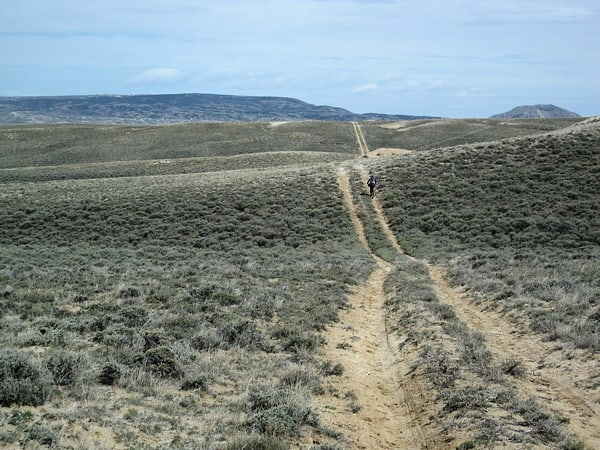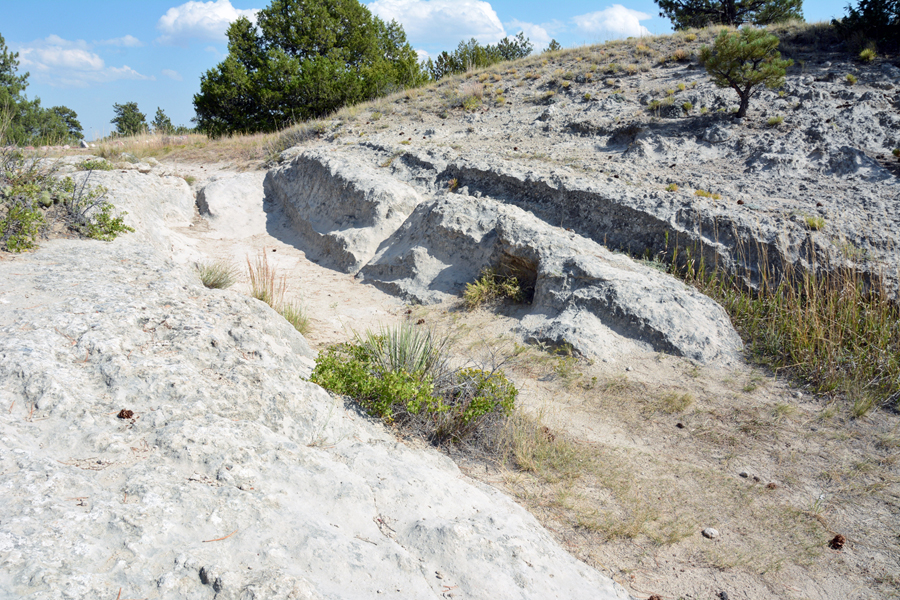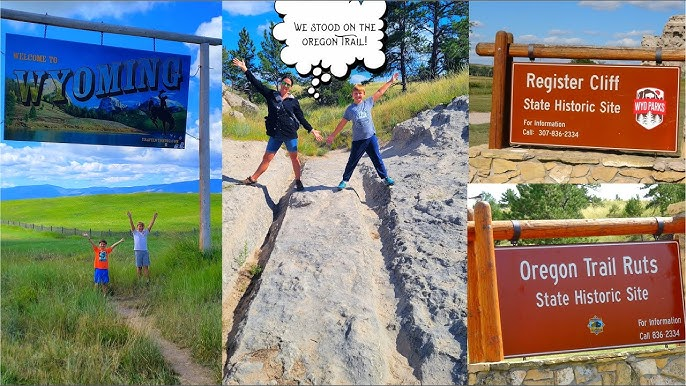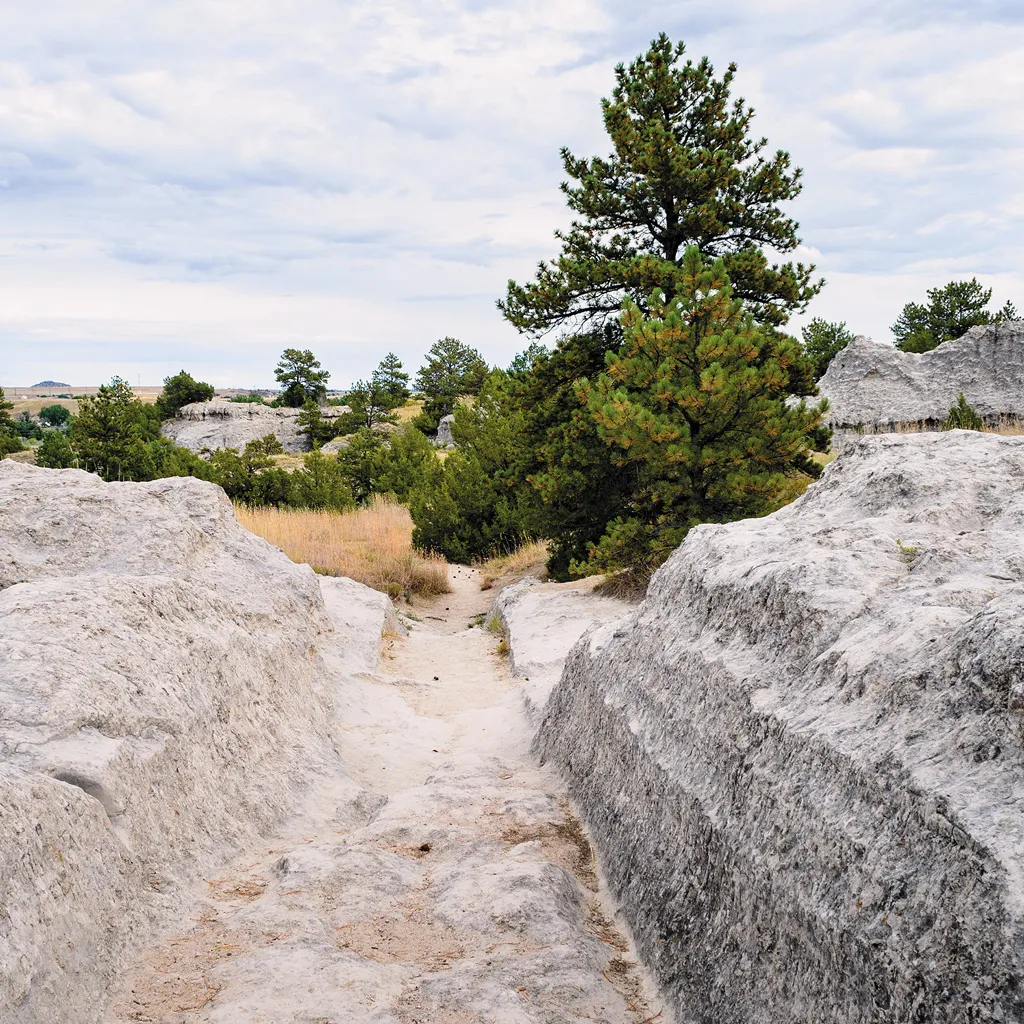Across the wide, open landscapes of Wyoming, there lies a remarkable and silent testament to one of the most iconic chapters in American history. Stretching for hundreds of miles, carved into stone and soil, are deep wagon ruts some as much as five feet deep that bear witness to a powerful movement of people, hope, and survival. These are the physical scars left behind by the Oregon Trail, one of the longest and most grueling migrations in the 19th century.
Between 1841 and 1869, roughly half a million pioneers braved the 2,000-mile trek westward from Missouri to Oregon. Their destination promised fertile farmland, fresh opportunity, and the possibility of a new beginning. What they left behind was a path deeply etched into the heart of America—especially across the rugged terrain of Wyoming, where the rock-hard surface preserved their effort better than any written record ever could.

The Trail That Shaped a Nation
The Oregon Trail was more than just a road. It was a defining symbol of Manifest Destiny, the belief that the United States was destined to expand across the North American continent. This trail took families, farmers, dreamers, and fortune-seekers through treacherous landscapes, river crossings, blistering heat, and early snowstorms.

Nowhere are the marks of this journey more clearly seen than in Wyoming. As wagons, often loaded with entire households, passed over the same stretches of land year after year, they wore grooves into the bedrock. In some places, these ruts are so deep and so straight that it feels as if the pioneers just passed through yesterday. The silence of the prairie, the wind brushing through the grass, and those unmistakable grooves in the stone all combine to stir the imagination of what life must have been like for those making the journey.
Video:
Oregon Trail: Wagon Ruts near Guernsey Wyoming
Endurance Written in Stone
The most famous and best-preserved of these ruts can be found at Guernsey, Wyoming. Here, the Oregon Trail ruts are so deep that they nearly reach the shoulders of a standing adult. They cut cleanly into the soft sandstone, creating natural time capsules of the 19th-century westward expansion. The area has become a historic landmark, attracting travelers, historians, and school groups eager to step into the footprints of the past.

What makes these ruts so powerful is that they weren’t carved by machines or deliberately built as infrastructure. They were shaped by repeated effort by countless wooden wheels, hooves, and human footsteps. These grooves are the literal imprints of determination. They remind us that history is not only something we read in books but something we can touch, see, and stand inside.
A Landscape Untouched by Time
One of the most astonishing things about Wyoming’s Oregon Trail ruts is how little they have changed in more than 150 years. Unlike other parts of the country where expansion and urban development have erased physical history, the isolated, rugged terrain of Wyoming has allowed these remnants to remain largely intact. There are no fences blocking them, no cities built over them. In some stretches, you can walk the trail for miles and see the same horizon that early settlers saw, unspoiled and wild.

This preservation is not just luck. It’s a reflection of the natural harshness of the landscape and the respect local communities have for their heritage. State parks and national landmarks across Wyoming help to protect these historic sites, ensuring that future generations can experience this powerful connection to America’s pioneer past.
Legacy of the Oregon Trail Lives On
While the Oregon Trail has long since faded from practical use, its legacy continues to shape the American spirit. It represents the will to take risks, to explore, and to chase dreams despite uncertainty. The people who traveled that path were ordinary in many ways farmers, mothers, children but they accomplished something extraordinary. They helped settle a continent. They helped build a nation.
Video:
What the Oregon Trail Looks Like Today From Above
Today, standing beside the deep wagon ruts in Wyoming, we’re reminded that history is not only made by grand battles or famous names. It’s also made by quiet persistence, by repeated effort, and by courage in the face of the unknown.
Conclusion: A Trail That Still Speaks
In Wyoming, the Oregon Trail doesn’t live in textbooks or museums alone. It lives in the earth itself. Each groove is a message, a memory, a monument to endurance. And as long as those ruts remain, carved into stone and silently stretching toward the horizon, the story of America’s westward journey will never truly be forgotten.



